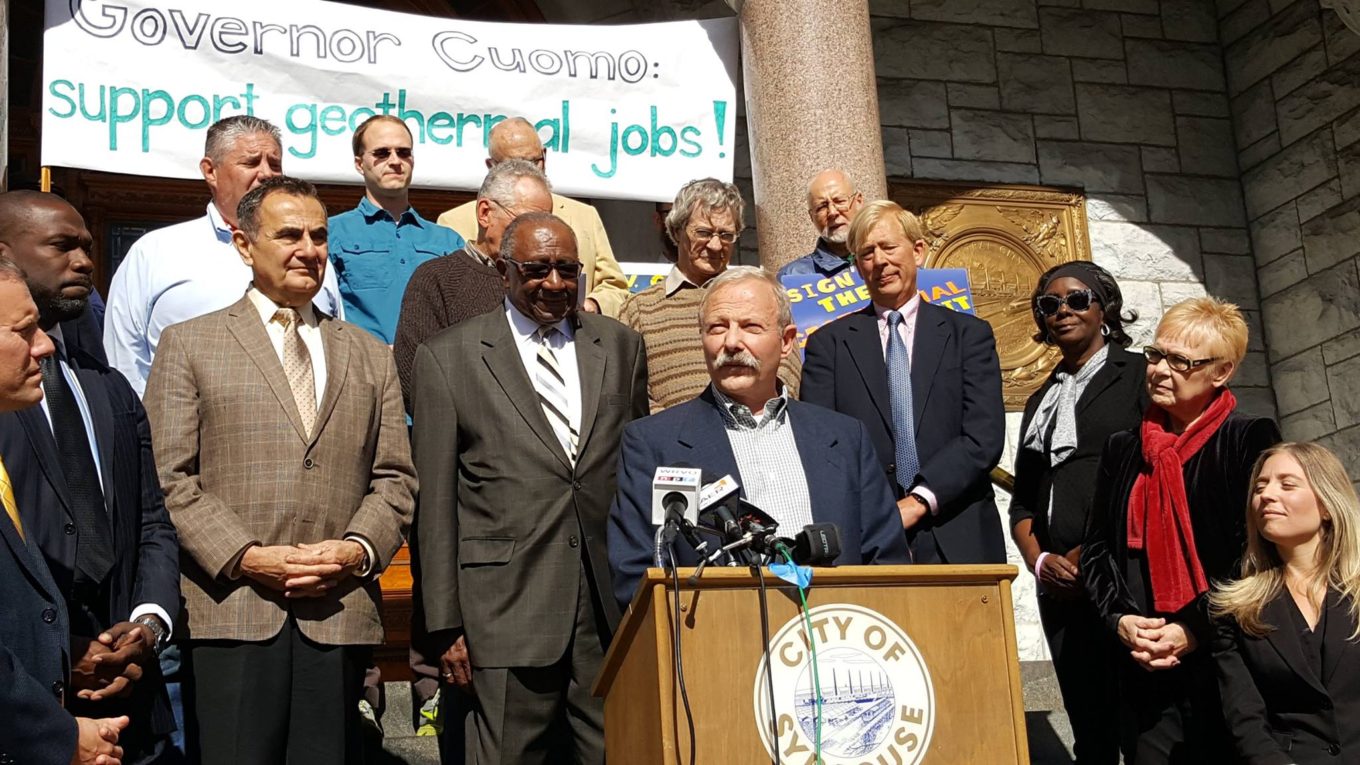Despite opposition, NYS Public Service Commission approves National Grid rate hike
FOR IMMEDIATE RELEASE
March 16, 2018
Contact:
Clarke Gocker, PUSH Buffalo, 716-604-6938
Jessica Azulay, AGREE, 917-697-4472
Decision risks undermining historic reforms to the energy system and worsening the energy affordability crisis in Upstate NY
In a meeting yesterday in Albany, the New York State Public Service Commission approved a Joint Proposal by utility corporation National Grid and other stakeholders to raise customer rates in its upstate electric and gas service territory. As part of the approved Joint Proposal, residential customers would see electric and gas rates increase by nearly $16 per month over the next three years, and fixed customer charges would remain locked in at $17 per month. National Grid’s fixed customer charge ranks among the highest in the country, and is more than three times the amount charged to residential customers in the company’s Massachusetts and Rhode Island service territories. High fixed customer charges serve to disempower conservation-minded customers who seek to limit personal energy consumption, and save money on their utility bills, through positive behavioral changes. They also spoil the economic viability of renewable energy investments by undermining potential energy cost savings.
Low-income advocates and grassroots environmental organizations, including PUSH Buffalo and the Alliance for a Green Economy (AGREE), opposed the joint proposal on the grounds it would not adequately address the energy affordability crisis in vulnerable upstate communities, including Buffalo and Syracuse. The much-touted energy affordability program included in the rate case will bring important relief to thousands of National Grid customers who live in low-income households. However, for some low-income people enrolled in the program, rates will go up more than for market rate customers, while tens of thousands of others will be left out of the program all together.
To give a sense of the scale of the affordability crisis in Erie County and Upstate NY:
- In 2016 the home energy affordability gap, i.e., the gap between affordable home energy bills and actual bills, for the nearly 120,000 low income households in Erie County totaled more $125,000,000, or a little more than $1,000 per household.
- Another indicator of the energy affordability crisis is customer arrears. National Grid is required to report data on customer arrears to the PSC on a monthly basis. In January 2018, almost 200,000 National Grid residential customers across the upstate service territory had accounts that were more than 60 days in arrears, totalling nearly $200,000,000.
- A final measure of affordability is utility service termination for non-payment. From 2014 thru 2016, National Grid terminated utility service for over 60,000 customers per year across its Upstate service territory.
Throughout the rate case, National Grid was quick to point out that their proposal to increase expenditures on a low-income utility bill discount program would be enough to mitigate the energy affordability crisis for all low-income customers, and that this effort was driven by their own corporate goodwill. PUSH and AGREE were among several groups across New York that fought hard in recent years for an improved low-income discount program, which they won in the summer of 2016 as part of a separate PSC proceeding. The new program will provide deeper and more meaningful discounts for the majority of low-income households enrolled in the program.
However, what the company failed to describe in its original proposal and throughout settlement negotiations was how a program that offers utility bill relief on a depreciating scale to eligible low-income customers will deliver a reduced benefit for thousands of economically vulnerable households directly impacted by the rate hike. The new energy affordability policy divides low-income households into tiers. For the approximately 4,000 low-income households in Tier 1, rates under the rate increase will be steeper than for non-low-income households because there will be a reduction in discount amounts compounded by the steep rate hike.
In addition, the utility bill discount program outlined in the approved Joint Proposal will only provide benefits to low-income households that receive support through the federal Home Energy Assistance Program (HEAP). Excluded from National Grid’s low-income program will be households that are eligible for the HEAP program but don’t receive HEAP assistance. The NYS Office of Temporary Disability Assistance, the state agency that administers the federal HEAP program in NY, has determined that approximately 70% of low-income New Yorkers are eligible for HEAP assistance but don’t receive it, and by extension would not be eligible to receive utility bill discounts like those included in the PSC’s order adopting the Joint Proposal. These households are particularly vulnerable to the adverse impacts of increased utility rates.
The decision by the PSC yesterday will not only intensify the energy affordability crisis in Upstate NY, but it appears at odds with a major regulatory reform initiative underway in New York since 2014, Reforming the Energy Vision (REV). REV has sought to transform the electric and gas utility industry to accelerate the shift away from fossil fuel energy generation, distribution, and consumption toward increased deployment of renewable distributed energy resources like solar, wind, geothermal, and energy efficiency. REV was premised in large part on disrupting the existing utility business model, and in the process subverting the monopoly power that investor-owned utilities have historically enjoyed, in order to increase opportunities for local ownership and control of clean energy infrastructure and any associated economic development benefits. Rather than reduce National Grid’s monopoly power, the PSC’s order will boost the company’s profits and guarantee the company’s investors a high rate of return. In 2017, the company reported earning $2.1 billion in profits from its U.S. business and paying out $1.8 billion in dividends to shareholders; figures that will likely rise over the course of the ensuing three year rate plan. Approval of the Joint Proposal will also permit National Grid to move forward with millions of dollars in capital investments in new fracked gas infrastructure in parts of its service territory. These investments will prolong customer dependence on a dirty fossil fuel source that is a major contributor to greenhouse gas emissions in New York State.
###

